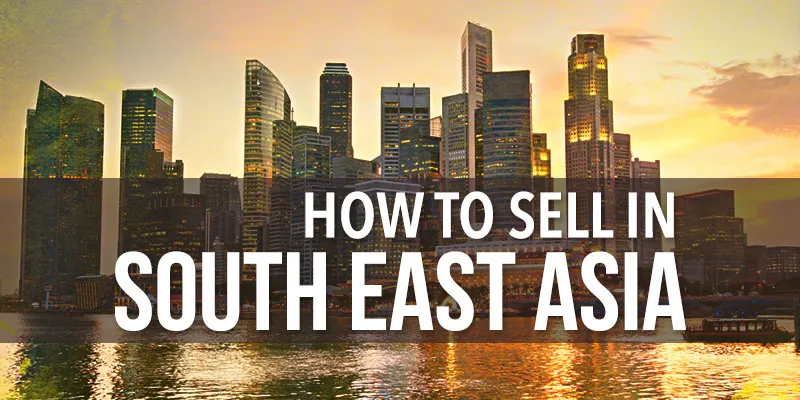Expanding to South East Asia: fine tune your product and mint money
Any Indian business that wants to expand in Asia starts with South East Asia (SEA), because of its geographic and cultural proximity. SEA is a group of 11 countries.The six big ones that matters are Indonesia (ID), Vietnam (VN), Philippines (PH), Thailand (TH), Malaysia (MY) and Singapore (SG). With a population of 600 million and a USD2 trillion-plus GDP, the region has the perfect size and scale to proof-test your product and service before they enter more competitive and ruthless Western markets. The limited talented pool of tech engineers and entrepreneurs, infrastructure bottlenecks, high mobile phone adoption, high price consciousness and a huge ethnic and Indian Diaspora make SEA a good testing ground for Indian companies, especially technology-driven businesses. Singapore can be the gateway with the other five SEA countries just two or three hours away (by air).

Singapore was the first country we ventured in when we went global. It’s the top country for ease of doing business -- be it registering or starting a business, favourable taxation, and enforcing contracts etc. As expected, it was a breeze to connect with agencies and brands with whom we were keen to do business.
In Singapore, English is the major language of communcation, due to its multi-ethnic society, which includes Chinese, Malay, Indian and Eurasian communities. Another advantage of SG is that it’s the regional headquarters for many companies operating in the region. So, decision-making is centralised there.
However, fastidiousness of public order is especially idiosyncratic to SG, be it a ban on chewing gum or strict public transport laws. Despite the ease of doing business, you run out soon owing to the small market: SG has a population of five million people over718 sq km.
Indonesia, on the other hand, with 250 million people, young demographic dividend and mobile-first, was the next obvious choice. While Blackberry Messenger (BBM) is on decline globally, it is still the largest messenger in Indonesia. Seventy nine percent of Indonesians use it ahead of WhatsApp and Line. More tweets come from Jakarta than from New York, Tokyo or London.
Surprise Surprise! Indonesia’s digital landscape is very vibrant, like India. Because of their shallow tech engineering talent, widespread red tape, unreliable logistics for e-commerce (it’s a scattered archipelago of 8000+ islands), limited global exposure, Indian software companies have a great opportunity to play a key role in bridging these gaps. You can initially start business by 'fly-in & fly-out', as English is the business language. Regional partnerships in SG will allow you to make in-roads in ID. We used the same sales strategy, but as we ventured stronger and deeper into the country, we needed Bahasa (local language) and local connections. Even McKinsey reports that Indonesians prefer local brands and products (perception of being local), so we felt a need to localise. We built a local sales team to further penetrate the market. ID, like India, presents opportunities to scale, which can be used to advantage if you’re smart. We quickly became the dominant player in the region.

Malaysia (MY) and Thailand (TH) are other two regions with huge ethnic and Indian Diaspora. Being one of the most famous destinations for Indian tourists, TH is favourable to Indian businesses. Thailand, though, pro-business, is hierarchal, and decision-making is slow. First meetings generally produce good humour, many smiles and polite conversation, but few results. Discussing business before becoming acquainted is impolite. Afternoon siesta is common, and you can find pillows at desks (hope Indian companies are listening). Degrees, especially from prestigious universities, bring status. Thais may list these on their business cards, too. They respect foreigners with powerful connections. Their English skills have more to be desired, but they look favourably to Indian tech entrepreneurs.
Malaysians, on the other hand, speak good English and share cultural and geographical proximity with Singaporean. Companies often do business in both regions. Hierarchical like most Asians cultures, Malays find it difficult to say 'No'. The way to sell in these markets is through the "Inside sales" model, where you have a team in SG to cover these markets and travel occasionally to build human connect. Feel free to leverage the Indian Diaspora in these markets.
Philippines (PH) and Vietnam (VN) are the other two big markets you need to focus on if you want to win big in SEA. PH has a strong English speaking population due to huge American influence, be it in local pop music to fast food chains like McDonalds, KFC and Dunkin Donuts. It’s no wonder that 70 per cent of voice call centres are moving there. Their English, too, is considered more "neutral" (as per Assocham).
VN, on the other hand, struggles with English, but is far ahead in technical aptitude. VN is a beautiful country from South to North, with tourist cities like Ho Chi Minh, Nha Thrang, Danang, Hue and Hanoi.
In VN, Zing Me (a local social network) is twice as popular as Facebook. Immensely popular mobile game Flappy Bird was developd in VN, too. However, there are four to five local conglomerates like VNG, FPT, Mobile World and Local Telcos that dominate technology. The best way to sell in VN is to find a local channel partner. You get your technology and the local folks get the business relationship and connections.
In the end, I can say SEA as a market is ripe enough to not only fine tune your product and service, but also make handsome gains with SG as your hub and the other five regions (ID, MY, TH, PH, & VN) as the spoke. And Buddha will surely smile!







